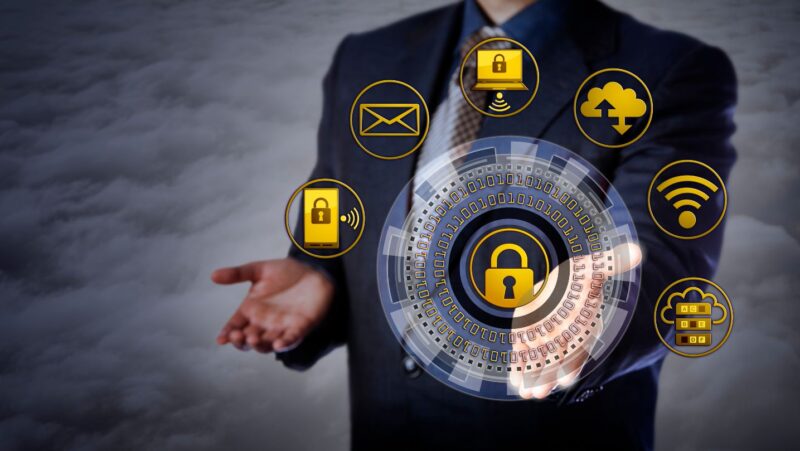As you navigate through the vast realm of cyberspace, the battle between the guardians of cybersecurity and the ever-evolving threats rages on.
The juxtaposition of innovation and vulnerability has shaped the evolution of cybersecurity software development. From the early challenges that pushed the boundaries of technological capabilities to the rise of machine learning and AI, the landscape of cybersecurity has undergone significant transformations.
But what lies ahead? Join us as we explore the shifting tides of cloud-based security solutions and uncover the future trends and emerging technologies that will shape the guardians of cybersecurity in the digital age.
Early Challenges and Innovations
Early in the development of cybersecurity software, developers faced numerous challenges and had to innovate to overcome them.
One of the key challenges they encountered was dealing with legacy systems. These were older computer systems and software that were no longer supported or updated by their manufacturers. Legacy systems posed a significant security risk as they often had vulnerabilities that could be exploited by cybercriminals. Developers had to find ways to secure these systems and protect them from attacks.
Another challenge was the lack of user education when it came to cybersecurity. Many users weren’t aware of the risks and didn’t take the necessary precautions to protect their systems and data. This lack of awareness made it easier for cybercriminals to gain unauthorized access to sensitive information. Developers had to not only create robust security software but also educate users about the importance of cybersecurity and how to protect themselves.
To address these challenges, developers started implementing new technologies and techniques. They developed advanced algorithms to detect and prevent cyber threats, as well as encryption methods to secure data. Additionally, they began creating user-friendly interfaces and providing educational resources to raise awareness about cybersecurity.
Rise of Machine Learning and AI
The integration of machine learning and artificial intelligence has revolutionized the field of cybersecurity software development. Machine learning applications have become crucial in the detection and prevention of cyber threats. With the increasing complexity and frequency of attacks, traditional rule-based systems have proven to be inadequate.
Machine learning algorithms, on the other hand, have the ability to analyze vast amounts of data and identify patterns that may indicate malicious activity.
AI-driven threat detection is a game-changer in the fight against cybercrime. These systems leverage machine learning algorithms to automatically identify and respond to threats in real time. By continuously learning from data and adapting to new attack vectors, AI-driven systems can detect even the most sophisticated attacks that may go unnoticed by traditional security measures.
Furthermore, machine learning enables the development of predictive models that can anticipate future attacks based on historical data. This proactive approach allows organizations to strengthen their defenses and prevent potential breaches before they occur.
The Shift to Cloud-Based Security Solutions
Cloud-based security solutions have become increasingly popular in the field of cybersecurity software development. These solutions offer numerous benefits, including scalability, cost-effectiveness, and ease of implementation.

By moving security infrastructure to the cloud, organizations can leverage the expertise and resources of cloud service providers, freeing up their own resources for other critical tasks. Additionally, cloud-based security solutions can be easily updated and patched, ensuring that organizations always have the latest protections in place.
However, there are also drawbacks to consider. One concern is the potential for data breaches and unauthorized access. When data is stored in the cloud, organizations must trust the cloud service provider to maintain the integrity and confidentiality of their information. To address this, organizations should carefully select a reputable and trustworthy cloud service provider and ensure that appropriate security measures are in place, such as encryption and access controls.
Another important consideration is data privacy. Organizations must ensure that their data is protected and comply with relevant privacy regulations. This includes understanding where data is stored and who has access to it. Organizations should also have clear policies and procedures in place for handling data in the cloud, including data retention and deletion.
Future Trends and Emerging Technologies
As cybersecurity software development progresses, new trends and emerging technologies are reshaping the landscape. Two significant areas that are gaining traction in the field are quantum encryption and IoT security.
Quantum encryption, also known as quantum cryptography, leverages the principles of quantum mechanics to provide secure communication channels. Unlike traditional encryption methods, which rely on complex mathematical algorithms, quantum encryption utilizes the properties of quantum particles to ensure the confidentiality and integrity of data. By exploiting the inherent properties of quantum mechanics, such as the uncertainty principle and entanglement, quantum encryption offers a level of security that’s virtually unbreakable.
IoT security, on the other hand, focuses on securing the vast network of interconnected devices that make up the Internet of Things (IoT). With the proliferation of IoT devices in various sectors, from healthcare to manufacturing, ensuring the security and privacy of these devices has become a critical concern. IoT security encompasses measures such as device authentication, data encryption, and secure communication protocols to safeguard against potential vulnerabilities and cyber threats.
Both quantum encryption and IoT security represent the future of cybersecurity software development. As technology continues to advance, it’s crucial for cybersecurity professionals to stay abreast of these emerging trends and technologies to protect against evolving threats and ensure the integrity of our digital infrastructure.







